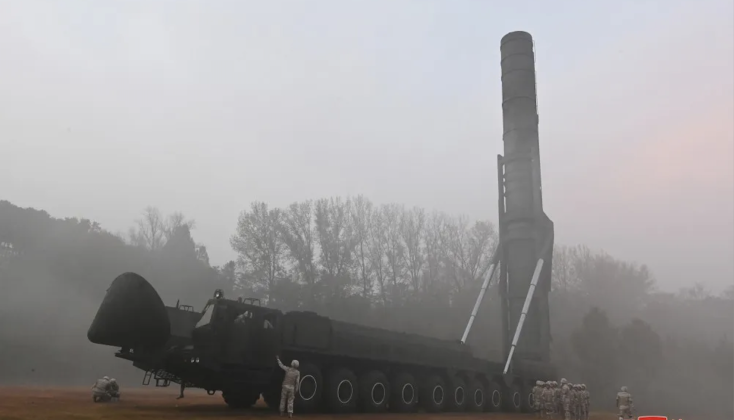News
North Korea Unveils New Hwasong-20 Solid Fuelled Multi-Warhead ICBM Built to Hit the U.S. Mainland
The Korean People’s Army has unveiled a new type of intercontinental range ballistic missile, which represents a major advance over previous designs and the culmination of over a decade of development work to provide an advanced strategic deterrent. First seen in Kim Il Sung Square, central Pyongyang, at a military parade marking the 80th anniversary of the ruling Korean Workers’ Party, a formation of the new road mobile missiles was among the central highlights of the event. The Hwasong-20 is a next-generation missile design with a larger diameter and greater thrust than its predecessor the Hwasong-19, and uses a 22-wheel transporter erector launcher. Following reports of significant progress towards developing a new engine for the missile, it is expected that the higher thrust achieved will allow the missile to carry more warheads, thus complementing advances in the development of multiple independent reentry vehicles.

The Hwasong-20 is notably smaller and more compact than previous North Korean designs such as the Hwasong-17, indicating that its new more efficient engine design may have significantly reduced the fuel payload required to reach the required ranges. It is expected that the new missile will begin flight testing in the coming months, possibly before the end of the year, allowing it to quickly replace older ICBM types in production. North Korea has brought five separate ICBM designs into service over the past eight years, including the Hwasong-14, 15, 17, 18 and 19, with each making incremental advances over their predecessors’ capabilities. The Hwasong-20’s advanced capabilities may make it the last new design developed for some time, with the missile potentially having further room for modernisation, including through the integration of hyperonsic glide vehicles as neighbouring China and Russia have done on their own ICBMs.
North Korea first demonstrated the ability to launch nuclear strikes against the United States mainland in July 2018, with the successful test of the new Hwasong-14 ballistic missile. Eleven days after the Hwasong-14’s second successful flight test on July 28, the Washington Post published part of a leaked Defense Intelligence Agency assessment confirming that North Korea was thought to be able to launch nuclear strikes against American cities with miniaturised nuclear warheads. The development of this capability has represent a pivotal change in the East Asian state’s seven decades long conflict with the United States, with experts widely concluding that the mutual vulnerability this ensured was key to pressing the United States to come to the negotiating table and significantly revise its objectives for its conflict with Pyongyang.During the Korean War from 1950-1953 the United States was responsible for wiping out an estimated 20-30 percent of North Korea’s population with the most intensive bombing campaign in world history at the time. While Washington would come close to launching new rounds of hostilities in subsequent decades, from the mid-1960s to 2017, the obtaining of the ability to retaliate against American cities has provided an invaluable security guarantee for Pyongyang.












